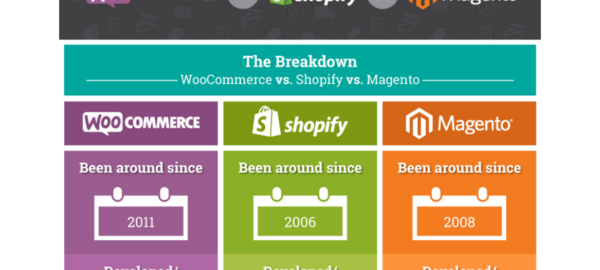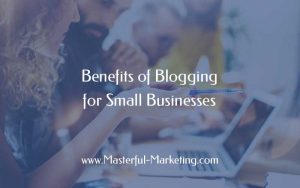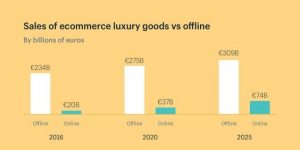Online commerce businesses could be hugely profitable and easy to run. According to Alexa, two out of the top 10 most visited websites in the US are the notorious eCommerce giants Amazon and eBay.
Millions of small eCommerce business owners struggle with positioning themselves and converting their incoming traffic.Despite their own products available at competitive costs, other stores seem to sell more, attract larger audiences, and build successful networks of resellers dealing with the heavy lifting.
There are several areas that eCommerce businesses can review in their business growth plan and ensure that their platform and content are finely tuned and laser-focused on their audience.
1. Limited eCommerce Platform
There are modern, low-cost hosted eCommerce platforms such as Shopify and Wix that you can easily leverage for a starting business in a matter of minutes. While they’re powerful and flexible, they have limited opportunities regarding customization or integrating additional services that would increase your conversion rates.
Successful eCommerce stores implement growth strategies that include exit intent pop-ups, different call to action components, conversion tracking funnel monitors and other tools that help them identify loopholes, reduce bounce rates, and increase revenue. Many of those cannot be integrated within a hosted solution and require a custom development platform or a solution such as WooCommerce which can be extended infinitely on your own hosting. At the moment of writing, WooCommerce powers close to 2 million eCommerce websites, representing 40% of all online sites.
2. Vague Buyer Persona
Are you selling to the right customer?
Understanding your target market is crucial for designing your landing pages and producing content that relates to their problems. Focus on defining your buyer persona and building your content and product overviews for them. The more refined your buyer persona is, the easier would it be to craft outstanding copy that would resonate with them and turn them into loyal customers.
3. Incomplete Product Description
Have you spent enough time on your product description?
Customers browse in different ways and look for specific details when looking for a particular product. They may be interested in color variations, different sizes, fashion trends, usability, a list of available features or options, warranty terms. If a picky customer reviews your product and can’t find what they’re looking for, they won’t bother asking follow-up questions and will navigate to a source that provides the full description.
As an added note, try to provide several high-quality images of your product. Think of an advertisement by McDonald’s or Coca-Cola – you only want to grab a burger or a soft drink the moment you see a banner on the street. Focus on uploading beautiful photos of your products or functional screenshots that would sell.
4. Complicated Sign-Up Forms

Conversion rates by industry – by Formstack and Hanapin Marketing
Refining a sign-up form is a scientific exercise that could be optimized in various ways. As a rule of thumb, customers are wary of sharing too much information and time-sensitive when they face a complex registration process.
Make sure that your sign-up process is as easy as possible. Consider account creation with through a social media account or a simple form asking only for the customer’s name and email. Marketing consultants have reported 25-50% increase in different sign-up services simplifying their sign-up forms by removing a field or two.
5. Confusing Navigation
eCommerce business owners should invest in categorizing their product and prioritizing the website navigation in the best way possible. Complex navigations and drop-down menus may be annoying for your customers who can’t seem to find what they are looking for.
Drop-down menus are to be avoided whenever possible since they impose a multitude of limitations when it comes to dynamic content.
Narrow or short menu boxes are frustrating as they quickly disappear when users attempt to click (especially with a touchpad). High menu boxes with long vertical lists would not show up entirely for smaller screens or lower resolutions. This gets even more complicated when you account for mobile views and the customer experience browsing on different devices.
Group your products in a logical manner depending on your buyer persona and rely on natural navigation suitable for all types of visitors.
6. Lack of Abandonment Cart Recoverability
Shopping cart abandonment is one of the biggest problems for eCommerce businesses that fail to complete a transaction. Studies show that over 67% of the shopping carts are abandoned, and most of them could be recovered through different techniques and technical implementations. Here are the various reasons for abandoning carts and their likelihood of happening:

Consult with your web development team or a hosted eCommerce provider on the possibilities for integrating an abandoned cart component in your website. You can recover 20-35% of your sales with an automated reminder to customers who haven’t completed a sale or provide them an additional incentive through a discount code.
7. Limited Upsell Opportunities
Do you get the most out of your existing customers?
Satisfied clients are often willing to reinvest in other products that would compliment your solution and support their business needs. Prepare bundle packages that include several of your products and utilize your email list with cross-promotion activities. Use your “Thank you” page wisely by recommending additional products of yours, or affiliated ones from your partners.
Most shopping carts provide existing components displaying “related products” based on the current category or keywords. Integrate them in archive views and single product pages, and feature the most popular products on your homepage.
8, SEO-Unfriendly Product Pages
Are your product pages optimized for prospects searching in Google?
According to a recent research quoted by Neil Patel, 93% of all online experiences begin with a search engine.

9 out of 10 prospects for your business will likely consult with Google before purchasing a product or a service.
Browse your Google Analytics profile and look for the traffic sources leading to your website right now. Also, review the query results in your Google Search Console and note the ones with the highest number of clicks and those with the most impressions.
Head to Google and conduct several searches:
- The name of your website
- The titles of your top products
- The main categories that you sell at
- Search term combinations such as “Best shoes in Boston” or “Young women clothes and bags.”
Your homepage, archive pages, and products should be optimized for search results. Here is a sample Google response for a notebook model and several results on the first page:

The first result presents 8 lines of product information as compared to 3-4 lines by competitors who haven’t optimized their product pages. By structuring your website correctly, defining the product description carefully, utilizing the power of meta title and description and microdata formats, you can earn additional space for free that would capture the attention of your visitors and lead to a higher click-through rate.
9. Cumbersome or Missing Shop Search
Your potential customers will land on different pages of your website while being in various phases of the purchase process. Some would be interested in reviewing other products in the same category, combining several products in a single purchase, or browse different areas of your product catalog before submitting an order.
Add a prominent search that would compliment the detailed product descriptions, flexible archive pages, and clean navigation. Consider an advanced search with filters in case you sell plenty of products that are hard to find. Find an additional option for excluding pages and blog posts or including them if you maintain documentation archives and user guides on the site.
10. Lack of Credibility
The first-time visitor browsing your store may be hesitant to buy without verifying the credibility of your business. Phantom firms and fake websites capture credit card information and personal details, and educated Internet customers are cautious when buying from unknown sources.
Build a beautiful and detailed About Page that provides enough information about you and your business. Aim for complete transparency combined with a compelling story on starting your business. Links to your social media accounts and a list of your team members would add to the reputability of your website.
Prepare a designated page for reviews, testimonials, and case studies. Collect and compile as much information as possible that proves the reliability and quality of your products. Insert reviews and testimonials within your single product views as well – this could be the turning point for purchase.
11. Inefficient Email Marketing
Utilize your email marketing strategy by sending regular campaigns, upsell opportunities; one time offers, promotions, discount code for registered users or anything else that is in line with your business plan and will target your customers.
Make sure that your new customers are added to your list (with the right opt-out disclaimer during a purchase). Prepare an automated email sequence for new clients that revolves around the onboarding process and the possibilities of your relevant products.
Email is still the best medium for marketing and sales and an invaluable business asset. You can share products that you’re affiliated with and would be of use to your customers and their business ventures.
12. Non-Targeted Content Production
Do you produce additional content on your site that is supposed to target new people, keep the site up and running, and increase your conversions?
Make sure that your blog content and all accompanying freebies are in line with the business niche and your buyer persona. Review your existing articles and ask yourself the following questions:
- Is my content organized logically in or each article is unrelated to the others?
- Am I talking to a particular audience or everyone out there?
- Are we solving a certain problem for our potential clients, or just producing SEO content?
Many eCommerce businesses hire freelance writers or just create content whenever they come up with an idea. Content should be planned carefully, organized for your target customers, and developed as a user guide – defining problems and their solutions. Internal link building between your relevant articles will also increase the contextuality of your content, and increase the time spent on the site by your visitors.
13. Hosting Limitations
Even if your products are unique and desirable, a poor choice of a web hosting provider can disappoint or frustrate your customers who are looking for a fast and safe buying experience.
Slow websites are simply a deal-breaker for many customers, as 47% of consumers expect a page to load in 2 seconds or less. 40% of those visitors are likely to abandon the site if the site takes longer than 3 seconds to load. Optimizing your website speed should be a priority for your brand, as it’s also an official signal in the search ranking algorithms (meaning that slow websites are officially affected when ranking in Google search result pages).
Other hosting limitations could be the lack of SSL support (sites starting with “https” in the address bar), insufficient server resources for handling given operations, or unreliable infrastructure that causes downtime and service interruption for your website. Partnering up with the right hosting provider is an important decision that would ensure the stability and reliability of your eCommerce business.
14. Limited Payment Gateways

The state of the payments ecosystem by Business Insider
A typical blocker for customers is the inability to purchase due to a small number of payment gateways. eCommerce stores usually provide one or two payment options, which would limit the ability of specific potential customers to take advantage of your offers.
If your virtual POS terminal does not accept Maestro or American Express cards, you are limiting customers who would only pay with one of those. Providing PayPal as an alternative is of interest to buyers who are active online and likely have funds directly in their PayPal account (no need to do bank or cards transfers). Certain groups may prefer cash on delivery or wire payments.
Analyze your target audience carefully and make sure that you’re flexible enough without losing focus on your business growth.
15. No competitive advantage
What is the primary incentive for a customer to buy from you? Are you selling a unique product or a commodity that could be acquired from dozens of eCommerce stores online?
Finding your competitive edge is paramount for convincing your visitors that you’re the best resource for them. There may be different reasons why your store is more suitable than the others:
- Some of your products are unique and more feature-rich as compared to others on the market
- Your collection of some products comes with a larger variety of sizes or colors
- Distribution and import costs are lower, which leads to lower prices for your customers
- Your user guides may be manually translated to a local language
- Shipping time is 12-24 hours, much faster than your competition
- Providing pre-sales and after sales support
Building audience of loyal and repetitive customers revolves around the personal touch and quality of work. Individual clients are price sensitive; others depend on short delivery terms. Use those as criteria when defining your buyer persona and make sure that you’re offering the right competitive proposition resonating with your users.
16. Vague Affiliate Opportunities
Have you outlined a clear and attractive reseller or partnership program for potential affiliates?
Even if your primary business plan is B2C sales to direct consumers, resellers may be interested in utilizing your services and promote them to a larger audience. Now, that is not applicable to all eCommerce stores out there, but when it is, it could multiply your traffic or purchases tenfold.
Create an affiliate or resellers page and link it in a prominent place on the site (a sidebar menu or a footer is fine). Outline the benefits for partners and your deal, and make the sign-up process as seamless and easy as possible.
17. Overspending on Pay-Per-Click
Have you been able to identify your customer acquisition cost (CAC) yet? If not, you may be burning more money on advertising than you are spending.
eCommerce business owners should experiment with lower budgets in advertising in order to refine their sales funnel, observe the browsing behaviors of their visitors, and ensure higher conversion rates. Even then understanding CAC is crucial.
Tons of online shops spend thousands on advertising a month while selling less from their visitors. This could be due to targeting the wrong audience on Facebook, ranking for poor keywords, unattractive product headlines, broken sales funnel, or anything else between the moment a prospect sees your ad and completing a possible order.
Advertising may be an excellent way to test your site changes or analyze different buyer personas, but make sure that you are not paying more than you’re receiving out of your campaigns.
Digital & Social Articles on Business 2 Community(131)
Report Post





